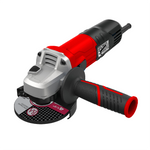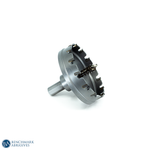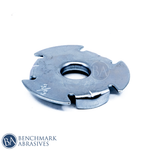
The 3 Essential Hammers Every Beginner Metalworker Needs in Their Shop

Introduction: Choosing the Right Hammer for the Job
Starting in metalworking or blacksmithing? One of the first things you’ll realize is that not all hammers are created equal. Choosing the right hammer can mean the difference between a clean, curved masterpiece and a lumpy mess that looks like it lost a fight with a freight train. Whether you're shaping, joining, or finishing metal, having the proper tools is critical, especially the hammer in your hand.
This guide breaks down the three essential types of blacksmith hammers every beginner should own: the cross peen, ball peen, and rounding hammer. We'll cover what makes each one unique, what jobs they’re best at, and why investing in quality up front will save your knuckles and your pride in the long run.
The Must-Have Trio: Cross Peen, Ball Peen, and Rounding Hammer
| Hammer Type | Description | Weight for Beginners | Primary Uses | What Makes It Unique |
|---|---|---|---|---|
| Cross Peen | Flat face + horizontal wedge (the “peen”) | 2–3 lbs | General forging, drawing out metal, spreading, decorative texturing | Wedge peen pushes metal in one direction, great for shaping edges and adding texture |
| Ball Peen | Flat face + rounded (ball) peen | ~2 lbs | Riveting, light forging, and forming metal joints | Rounded peen shapes rivets cleanly without flattening the surrounding surfaces |
| Rounding Hammer | Two round faces with different curvatures | ~2.5 lbs | Smoothing, curving, and finishing forged pieces | Dual round faces allow control over how tight or wide your curves come out |
1. Cross Peen Hammer – The Workhorse of the Forge

What it is: A dual-purpose hammer with a flat face and a wedge-shaped cross peen.
Why you need it: It spreads hot metal efficiently in one direction and is essential for drawing out and shaping metal.
Perfect for: Widening stock, creating leaf shapes, texturing decorative pieces, and general forging.
Pro Tip: If you only have one hammer to start with, make it this one. You can form blades, scrolls, and texture bar stock with a well-balanced 2–3 lb cross peen.
Example Use: Creating a textured edge on a garden hook or lengthening a blade blank with directional blows.
2. Ball Peen Hammer – The Fabricator’s Friend

What it is: A hammer with a flat striking face and a rounded peen.
Why you need it: Great for joining metal with rivets, shaping soft metal, or refining metalwork with pinpoint control.
Perfect for: Riveting, mushrooming, peening, and texturing metal. Also good for striking punches or chisels.
Pro Tip: A 2-lb ball peen is great for fabrication work that involves fasteners or rivet assembly. It’s a classic all-purpose tool every welder and metalworker should have.
Example Use: Setting dome-headed rivets on a steel toolbox or giving a light texture to a forged bottle opener.
3. Rounding Hammer – For Curves That Don’t Suck

What it is: A symmetrical hammer with two differently curved round faces—perfect for shaping curves and smoothing surfaces.
Why you need it: Offers precise control over shaping and finishing, especially when working with scrolls or rounded forms.
Perfect for: Forging hooks, rings, ornamental curves, and smoothing hammer marks.
Pro Tip: This is the finisher’s tool. After you beat a part into shape, the rounding hammer smooths it into something beautiful. Use the rounder face for tighter curves and the flatter one for subtle shaping.
Example Use: Forging a clean spiral on a gate scroll or rounding off the sharp transitions on a blacksmith’s knife.
John at Ace Leather and Knife Works in South Caroline says, “Some would argue the rounding hammer is the most essential or most widely used by blacksmiths as you can tilt the rounding side with careful striking and use it as a cross pein. (Peen)….and great advice on not starting too heavy.”
Beginner Advice: Don’t Go Heavy Just Yet
You might think a big hammer equals big results, but if you're just starting, keep it light. Go with hammers in the 2 to 3 lb range (1,000–1,500g). It’s easier on your wrists, better for technique, and safer overall. You’ll be surprised how much control and finesse matter more than brute force.
Hammer Quality: Why Brand Names Matter
Cheap hammer = dangerous hammer. Avoid bargain-bin tools or carpentry hammers from big box stores. Forging generates extreme heat and pressure—cheap heads can chip or fly off.
Stick with proven names like:
- Picard – Known for precision and comfort.
- Big Blu – Great balance, made for blacksmithing.
- Peddinghaus – German-made, built like tanks.
Average Cost: Expect to spend $45–$145. It’s an investment in your fingers.
Additional Buying Tips
-
Handle Material: Go for hickory or hardwood handles. They’re shock-absorbent and stay cooler than steel or composite.
-
Buy From: If you're just starting, buying from a larger distributor with a wide selection and a range of prices is the way to go but once you’ve got a little forging time under your belt your going to want to take a gander at the beauties made small batch or individually by a blacksmith. “There’s a significant value in custom-made hammers. All of the hammers I use are hand-forged by individual makers, and they far outperform the mass-produced ones I’ve collected over the years. One major advantage of going the custom route is that they typically arrive fully finished and ready for use. Additionally, you can request specific, non-standard weights that better suit your forging style—instead of being limited to preset options.” – Eric Finch from Finches Forge in Pennsylvania.
| Stores | Blacksmiths |
|---|---|
| Blacksmiths Depot | Coal Township Forge - Michael Hoops |
| Centaur Forge | Sunset Forge NJ - Cliff Dutton |
| Pieh Tool Co. | Hornytoad Forge - Ben Snure |
| Gnome Hammer Forge - Ryan Brueck |
- Justin from Modica Knives in Arizona says, “I am a big fan of hammers made by blacksmiths.”
Pro Tips:
-
Some hammers come “unfinished.” You might need to dress the faces (round sharp edges, polish) before they’re ready for the forge.
-
Handle Shape is important. “For me, the shape of the handle plays a huge role in the quality of my forging, specifically due to how it affects indexing to the hammer face. There are several handle styles out there, but the only one I use is what I refer to as the “toothpick” style—a straight, rectangular handle with chamfered edges. The benefit of this shape is that it provides instant, tactile feedback on face orientation, allowing me to rotate between hammer faces mid-forging with confidence. Rounded handles, on the other hand, make it much easier to misalign the face and risk inaccurate strikes.” - Eric Finch from Finches Forge in Pennsylvania.
When You’re Ready to Expand
As your skills level up, so should your hammer rack. Add these specialty tools:
- Straight Peen Hammer: For drawing out metal lengthwise.
- Sledge Hammer: For brute-force jobs and team striking.
- Planishing/Chasing Hammers: For delicate surface work and detail shaping.
Each has its role in the shop, but none replaces the essential trio outlined above.
Wrapping It Up: Build Your Base with the Right Tools
If you’re serious about blacksmithing or metalworking, start with the essentials: a cross peen for shaping, a ball peen for joining, and a rounding hammer for finishing. Don’t get sidetracked by the big flashy sledges until your technique is dialed in. Invest in quality tools, protect your hands, and forge smart from the start.



































































